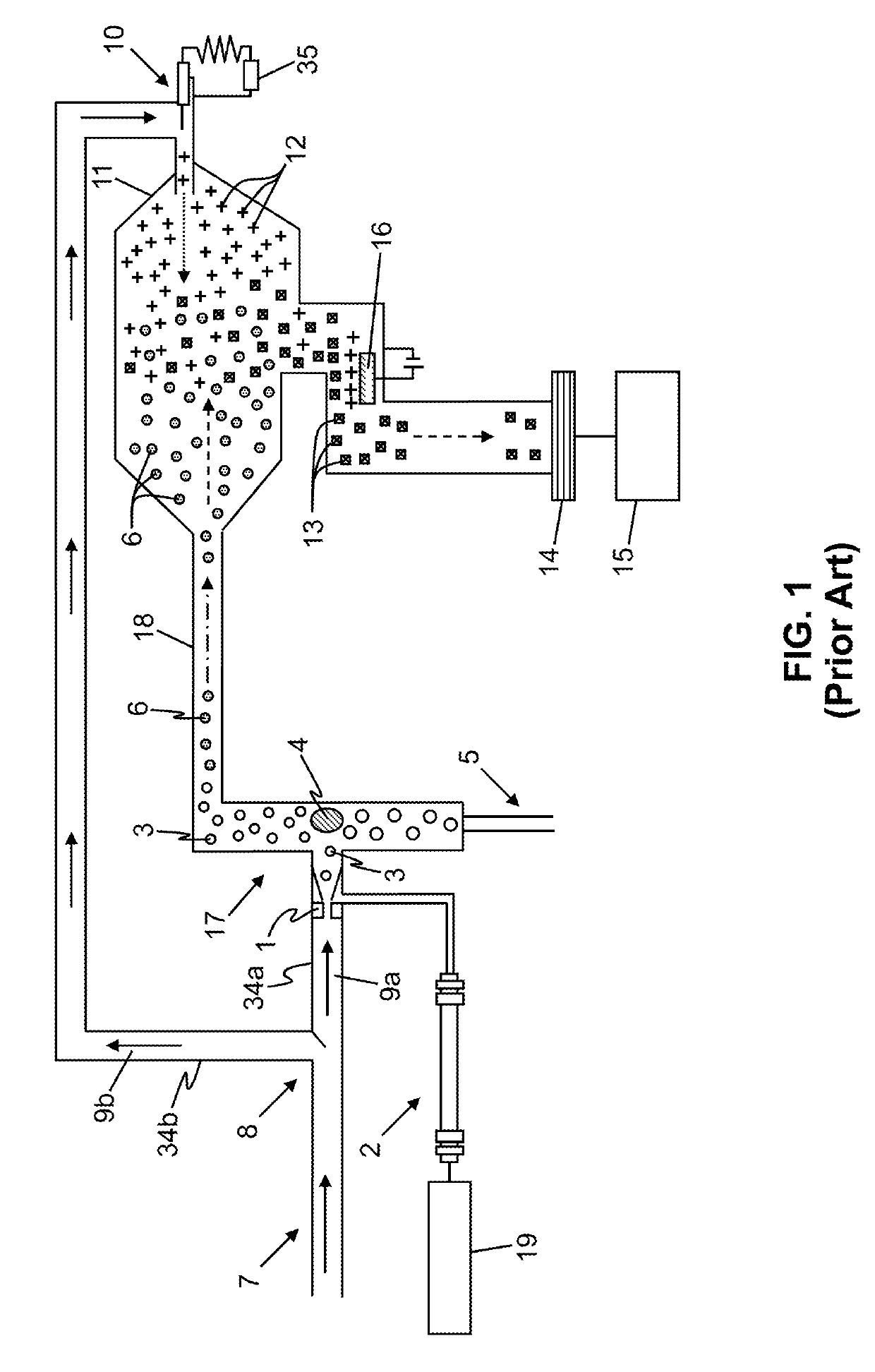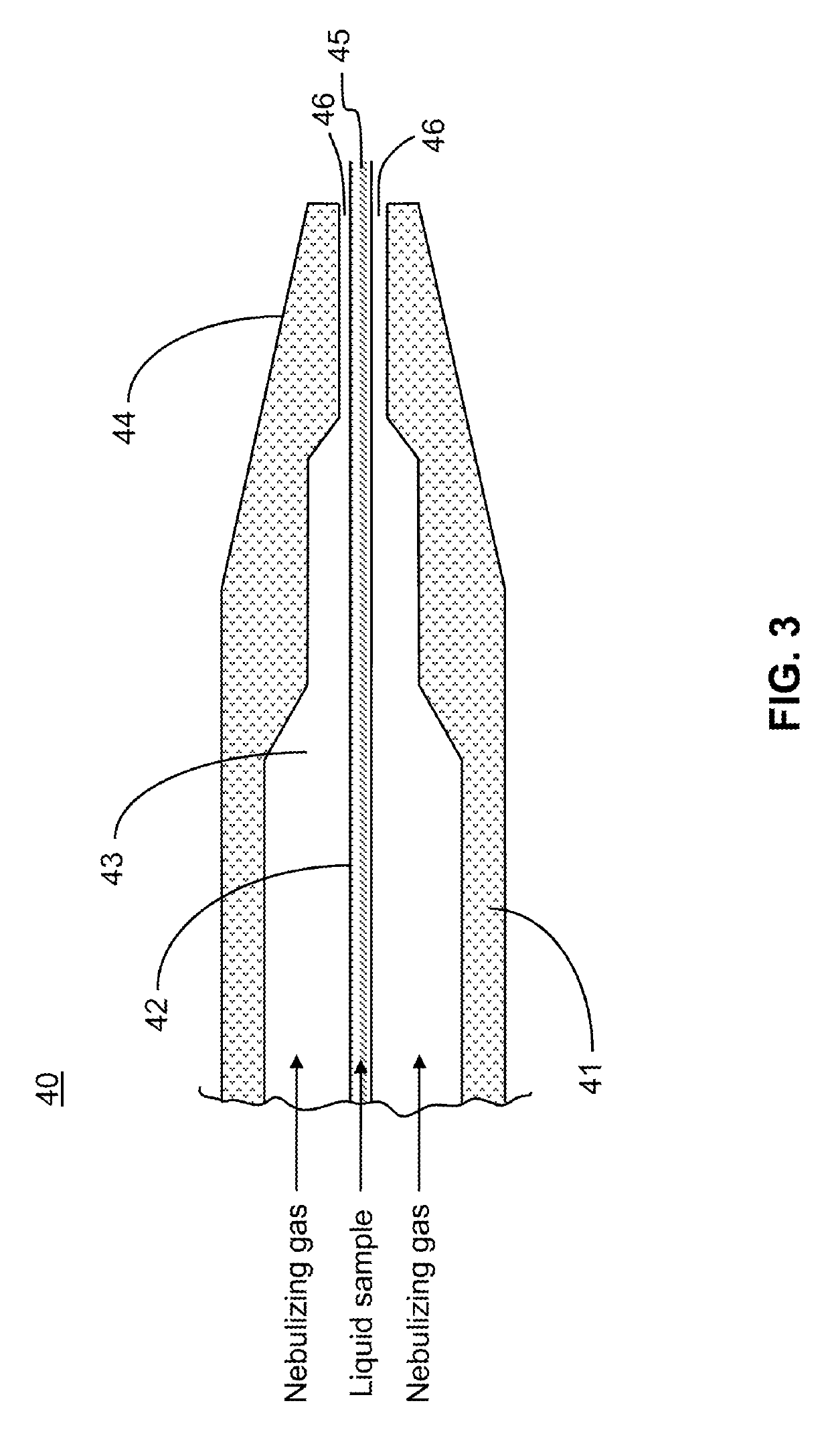Methods and systems for detection of non-volatile solutes
a non-volatile solute and detection method technology, applied in the field of non-volatile solute detection methods and systems, can solve the problems of non-linear calibration curves of aerosol detectors, solvent gradient lc separation is often considered to be the single most significant limitation of lc-aerosol detectors, and the non-linear response is commonly viewed as the single most significant limitation of aerosol detectors, so as to prevent the supersaturation of volatile components, the effect of minimizing
- Summary
- Abstract
- Description
- Claims
- Application Information
AI Technical Summary
Benefits of technology
Problems solved by technology
Method used
Image
Examples
Embodiment Construction
[0040]The following description is presented to enable any person skilled in the art to make and use the invention, and is provided in the context of a particular application and its requirements. Various modifications to the described embodiments will be readily apparent to those skilled in the art and the generic principles herein may be applied to other embodiments. Thus, the present invention is not intended to be limited to the embodiments and examples shown but is to be accorded the widest possible scope in accordance with the features and principles shown and described. The particular features and advantages of the invention will become more apparent with reference to the appended FIGS. 1-3, 4A, 4B, and 5-8, 9A and 9B taken in conjunction with the following description.
[0041]FIG. 2 depicts a cross-sectional view through a nebulizer constructed in accordance with an embodiment of an invention taught in co-pending U.S. patent application Ser. No. 14 / 288,693, which is assigned t...
PUM
| Property | Measurement | Unit |
|---|---|---|
| particle diameters | aaaaa | aaaaa |
| diameters | aaaaa | aaaaa |
| diameter | aaaaa | aaaaa |
Abstract
Description
Claims
Application Information
 Login to View More
Login to View More - R&D
- Intellectual Property
- Life Sciences
- Materials
- Tech Scout
- Unparalleled Data Quality
- Higher Quality Content
- 60% Fewer Hallucinations
Browse by: Latest US Patents, China's latest patents, Technical Efficacy Thesaurus, Application Domain, Technology Topic, Popular Technical Reports.
© 2025 PatSnap. All rights reserved.Legal|Privacy policy|Modern Slavery Act Transparency Statement|Sitemap|About US| Contact US: help@patsnap.com



